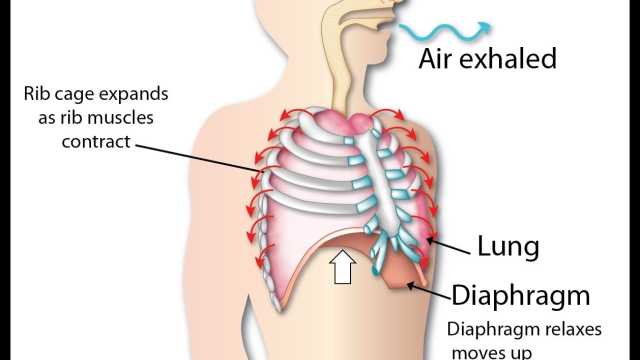
Inhalation devices have become a vital part of respiratory healthcare, providing patients with essential treatments that are both effective and accessible. Over the years, these devices have evolved dramatically, integrating advanced technologies to enhance the delivery of medications directly into the lungs. From early hand-held inhalers to sophisticated nebulizers, the journey of inhalation devices reflects significant advancements in medical science and engineering.
One of the frontrunners in this field is Aptar, a company dedicated to developing innovative inhalation solutions. Their commitment to improving patient experiences and outcomes has led to the creation of devices that not only deliver medications efficiently but also cater to diverse needs. As we explore the evolution of inhalation devices, we will delve into the pivotal role companies like Aptar play in shaping the future of respiratory therapy, ultimately making it easier for individuals to breathe easy.
Historical Development of Inhalation Devices
The use of inhalation devices can be traced back to ancient civilizations, where herbal inhalation was practiced for respiratory ailments. Early records indicate that Egyptians and Greeks utilized fragrant herbs and steam to alleviate respiratory issues. These methods laid the groundwork for understanding how inhaled substances could influence health. As time progressed, the recognition of inhalation as a therapeutic technique gained traction, especially during the Middle Ages, when medicinal vapors became common treatments.
In the 19th century, significant advancements took place with the introduction of more sophisticated inhalation devices. The development of nebulizers and inhalers made it possible to deliver medications directly to the lungs. This era also witnessed the exploration of various inhalation methods, including the use of solutions and powders. These devices became essential for treating conditions such as asthma and tuberculosis, marking a shift towards more effective respiratory therapies.
The late 20th century brought further innovation, as pharmaceutical companies began to refine inhalation technology. Metered-dose inhalers emerged, allowing for precise medication delivery and improving patient compliance. Companies like Aptar played a significant role in this evolution, enhancing the design and functionality of inhalation devices. This period marked a turning point in asthma and chronic obstructive pulmonary disease management, making inhalation devices an integral part of respiratory care.
Technology Behind Aptar’s Inhalation Solutions
https://aptar.com/pharmaceutical/delivery-routes/inhalation/
Aptar’s inhalation devices leverage cutting-edge technology to enhance the delivery of therapeutic aerosols. By utilizing precise metering systems, these devices ensure that the right dosage is administered to the patient with each use, which is critical for effective treatment outcomes. This level of accuracy not only improves patient adherence but also fosters trust in the delivery mechanism.
The design of Aptar’s inhalers incorporates user-friendly features that cater to diverse patient populations, including children and the elderly. Ergonomic shapes and intuitive interfaces facilitate ease of use, allowing patients to administer their treatments confidently. This customer-centric approach to design reflects a deep understanding of user needs, ensuring that technology serves its intended purpose effectively.
Moreover, Aptar invests significantly in research and development to stay at the forefront of inhalation technology. Innovations such as smart inhaler integration and real-time monitoring systems are being explored to provide patients with feedback on their medication usage. These advancements not only enhance therapeutic efficacy but also create a more connected healthcare experience, ultimately leading to better health outcomes for patients relying on inhalation therapy.
Clinical Applications and Benefits
Inhalation devices have revolutionized the management of respiratory conditions, providing targeted delivery of medication directly to the lungs. This method is particularly beneficial for patients with asthma and chronic obstructive pulmonary disease, as it ensures that a higher concentration of the drug reaches the site of action. As a result, patients experience faster relief from symptoms and a reduction in the need for systemic therapies, which often come with more significant side effects.
The versatility of inhalation devices extends beyond respiratory disorders. They are increasingly being used for conditions such as cystic fibrosis and pulmonary hypertension, where precise delivery of therapies can improve patient outcomes. Furthermore, advancements in device technology, such as those provided by Aptar, enable dosing accuracy and ease of use, which are critical for patient adherence to treatment regimens. Enhanced design features, such as breath-actuated mechanisms, further empower patients by simplifying the inhalation process.
Moreover, the evolution of inhalation devices has implications in public health, especially during health crises. With the rise of viral infections that affect the respiratory system, inhalation devices can be adapted to deliver antiviral medications effectively. This adaptability can significantly alter treatment protocols, leading to better management of both acute and chronic respiratory conditions, ultimately improving quality of life for countless patients.
Future Trends in Inhalation Therapy
The future of inhalation therapy is poised for significant advancements, driven by technological innovations and a growing understanding of respiratory diseases. One of the most promising trends is the integration of smart technology into inhalation devices. These devices are becoming increasingly capable of providing real-time feedback to users, helping them monitor their condition and adherence to prescribed therapies. With features such as connectivity with mobile apps, patients can receive reminders for doses and track their usage patterns, making management of respiratory conditions more effective.
Another critical trend is the continued focus on personalized medicine. As research progresses, inhalation devices are expected to be tailored to meet individual patient needs. This customization may involve adjustable dosing systems or formulations that cater to the specific characteristics of a patient’s disease. The development of personalized inhalers can significantly enhance the effectiveness of treatment and improve patient satisfaction by addressing unique requirements.
Moreover, the regulatory landscape is evolving to accommodate the rapid advancements in inhalation technologies. As new delivery systems emerge, there will be a push for streamlined approval processes that ensure safety and efficacy while encouraging innovation. Collaboration between manufacturers like Aptar and regulatory bodies will be essential to facilitate the introduction of novel inhalation devices that can better cater to the needs of patients, ultimately leading to improved health outcomes in respiratory care.


